INDIA has a great history of Maharajas and their love for extravagant Gems & Jewels, inviting most renowned brands international jewellery brands like Boucheron, Cartier, Mellerio, Van Cleef & Arpels, and Mauboussin. They created the jewels for the royal families by taking inspiration from Indian motifs and architecture.
Unfortunately, the Maharajas lost their affluence and status to the foreign rulers in the country. The magnificent jewellery that once adorned the royalties of India now has a place in museums around the world.
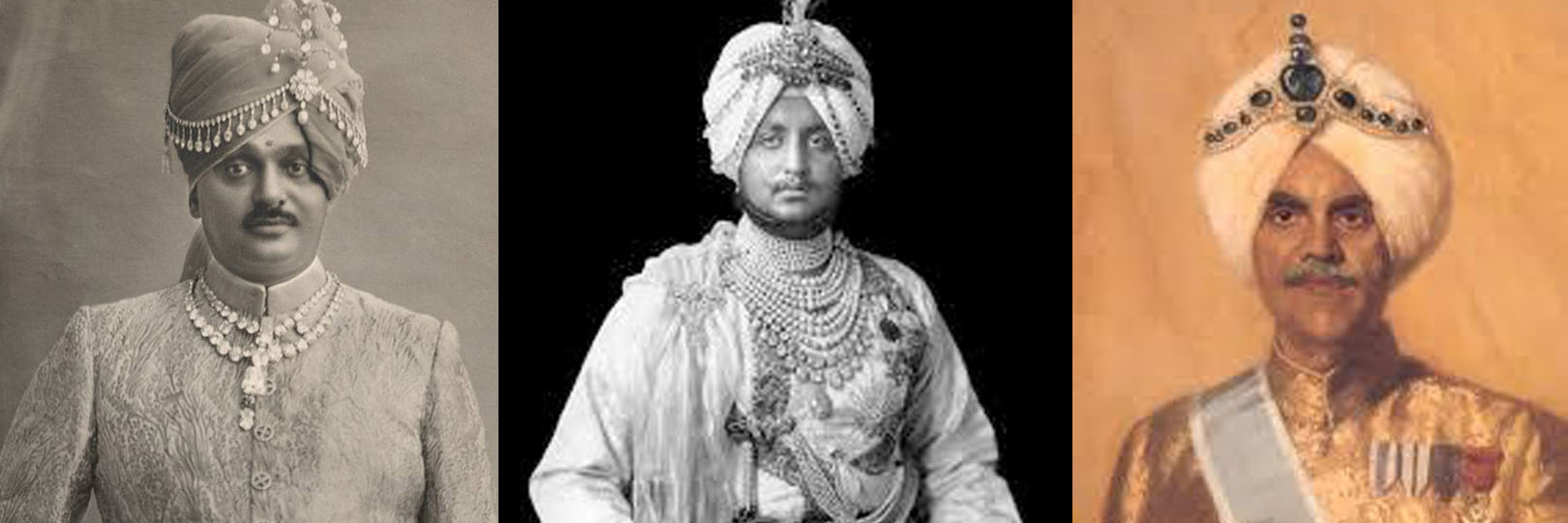
It gives me immense pride and joy to share the magnificent Jewels of the Indian Maharajas.
Patiala Necklace for Bhupinder Singh of Patiala
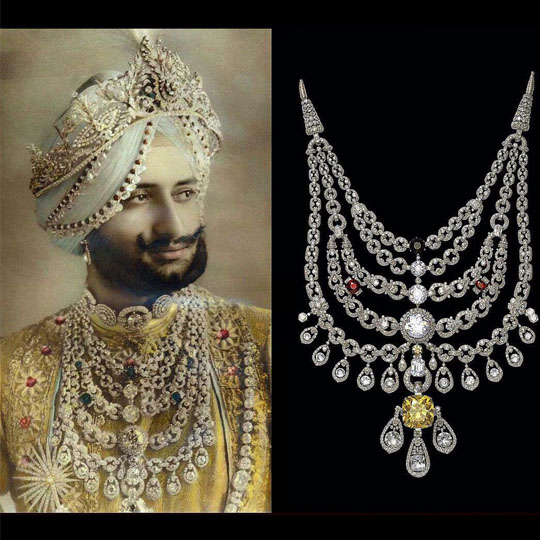
The Patiala Necklace was a necklace created by the House of Cartier in 1928, It was made for Bhupinder Singh of Patiala, who was the Maharaja of the princely state of Patiala.
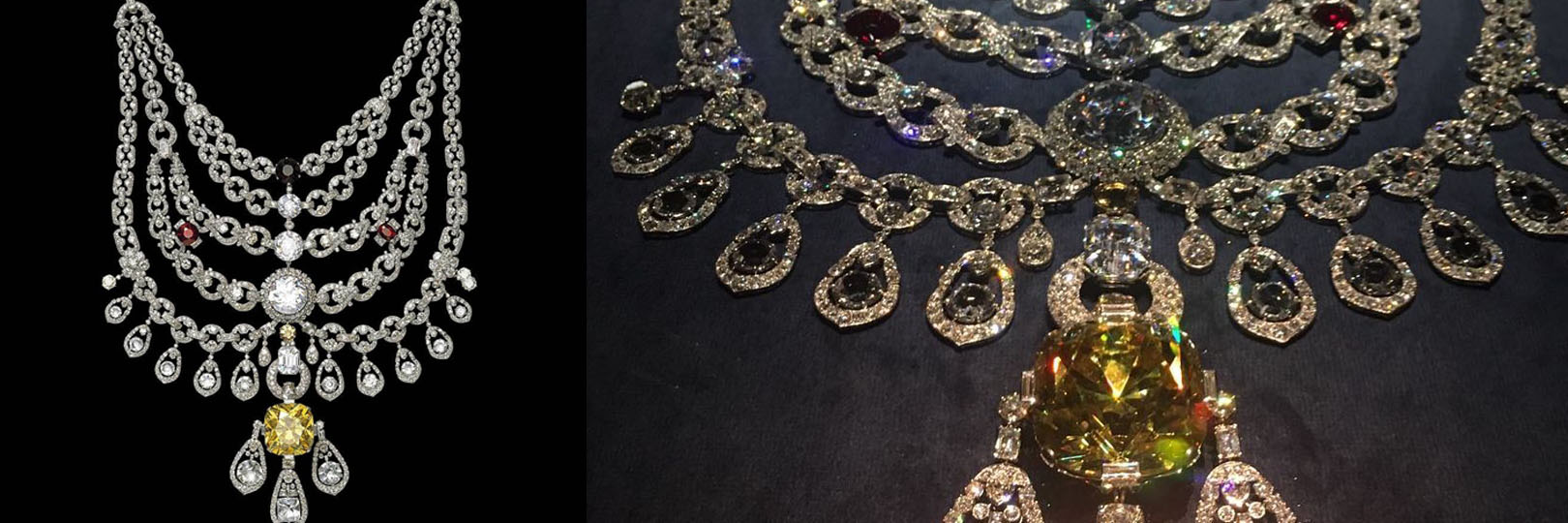
The necklace contained 2,930 diamonds, including as its centrepiece the world’s seventh-largest diamond at the time, the “De Beers”. That diamond had a 428-carat pre-cut weight and weighed 234.65 cts in its final setting. The necklace also contained seven other large diamonds ranging from 18 to 73 carats, and a number of Burmese rubies. The necklace disappeared from the Royal Treasury of Patiala around 1948.
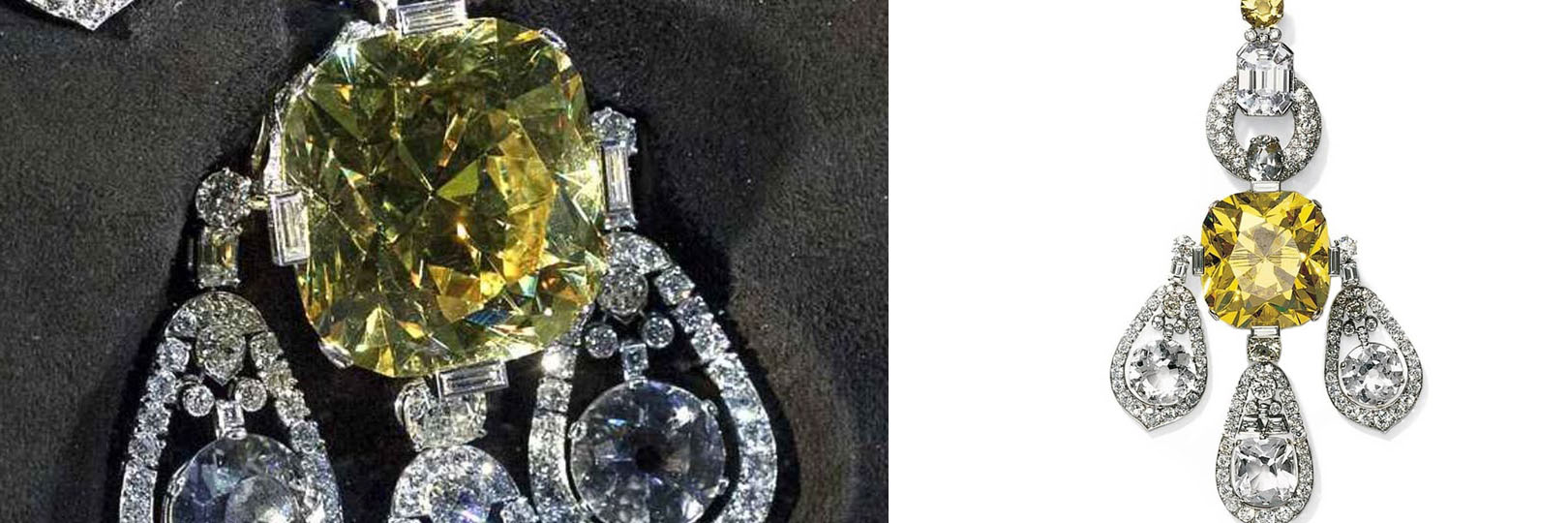
In 1982, at a Sotheby’s auction in Geneva, the “De Beers” diamond reappeared. There, the bidding went up to $3.16 million, but it is unclear whether it met its reserve price.
In 1998, part of the necklace was found at a second-hand jewellery shop in London The remaining large jewels were missing. Cartier purchased the incomplete necklace and, after four years, restored it to resemble the original. They replaced the lost diamonds with cubic zirconia and synthetic diamonds and mounted a replica of the original “De Beers” diamond.
Ceremonial Necklace for Maharajah of Nawanagar
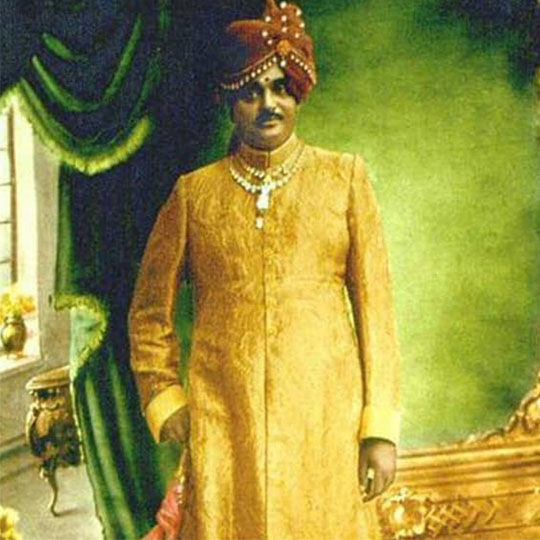
The necklace was made for the Maharajah of Nawanagar, 1931 by Jacques Cartier.
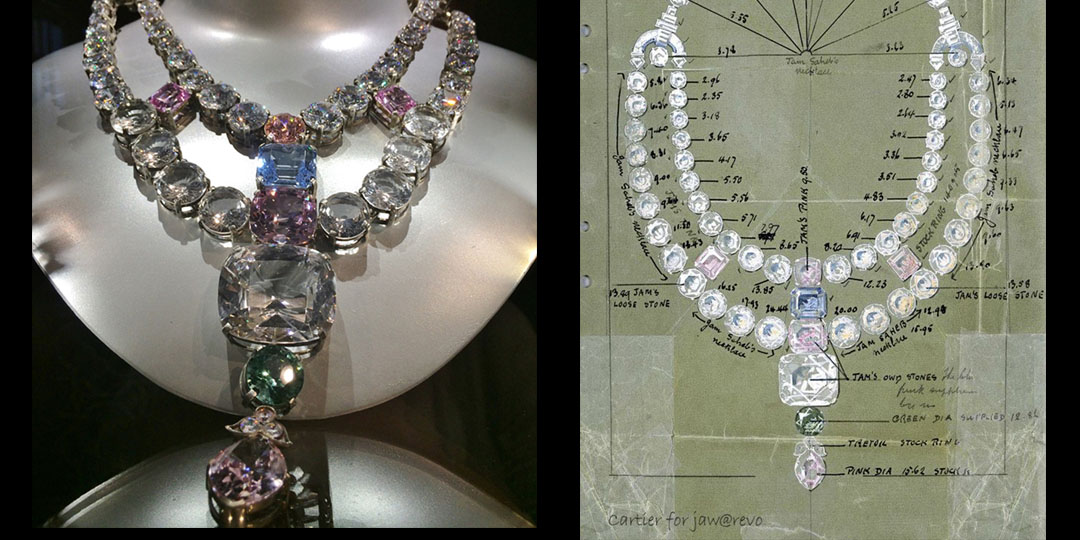
Described as the finest Cascade of Colored diamonds in the world, it included the 136.25-carat blue-white Queen of Holland Diamond, a 12-carat olive-green diamond and several substantially sized pink diamonds among other huge white diamonds. Jacques Cartier said the necklace was “a superb realization of a connoisseur’s dream.”
Sadly, the necklace no longer exists except in archival photos. The image on left is a Replica of the necklace.

The big diamond necklace was featured in Ocean’s 8 trailers, named as Jeanne Toussaint Necklace by Cartier. To create the necklace for the film, Cartier mobilized the resources of its High Jewelry workshops situated at 13 Rue de la Paix in Paris. It took more than 4,200 total hours to create the necklace for the film, involving 10 to 15 artisans.
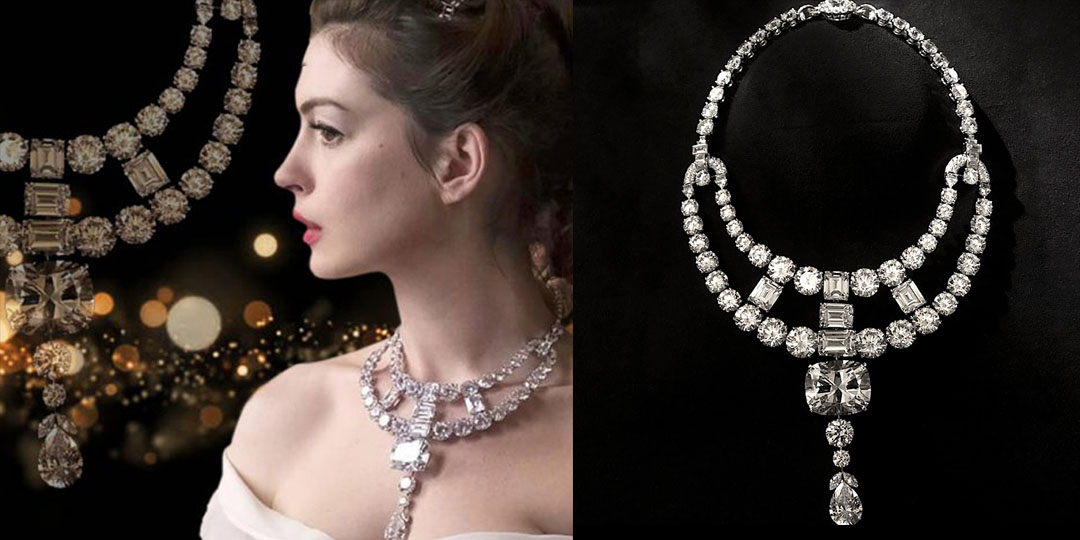
The necklace for the film was adjusted to Anne Hathaway’s measurements and reduced by 15 to 20 per cent of the original size, as it was initially designed for a man.
Boucheron Jewels for Maharaja Bhupinder Singh of Patiala
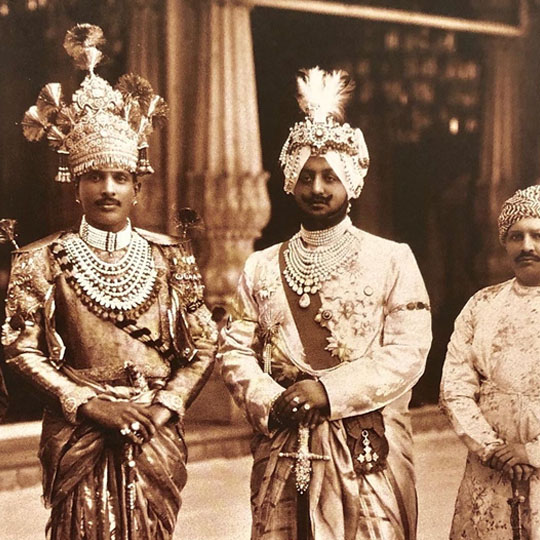
Indian culture was definitely one of the most important sources of inspiration for French high-end jewellery houses during the 1920s and 1930. Boucheron has been creating unique masterpieces for the worldwide elite since the 19th century. Maharaja Bhupinder Singh of Patiala had 149 pieces of jewellery designed by Boucheron in 1928.
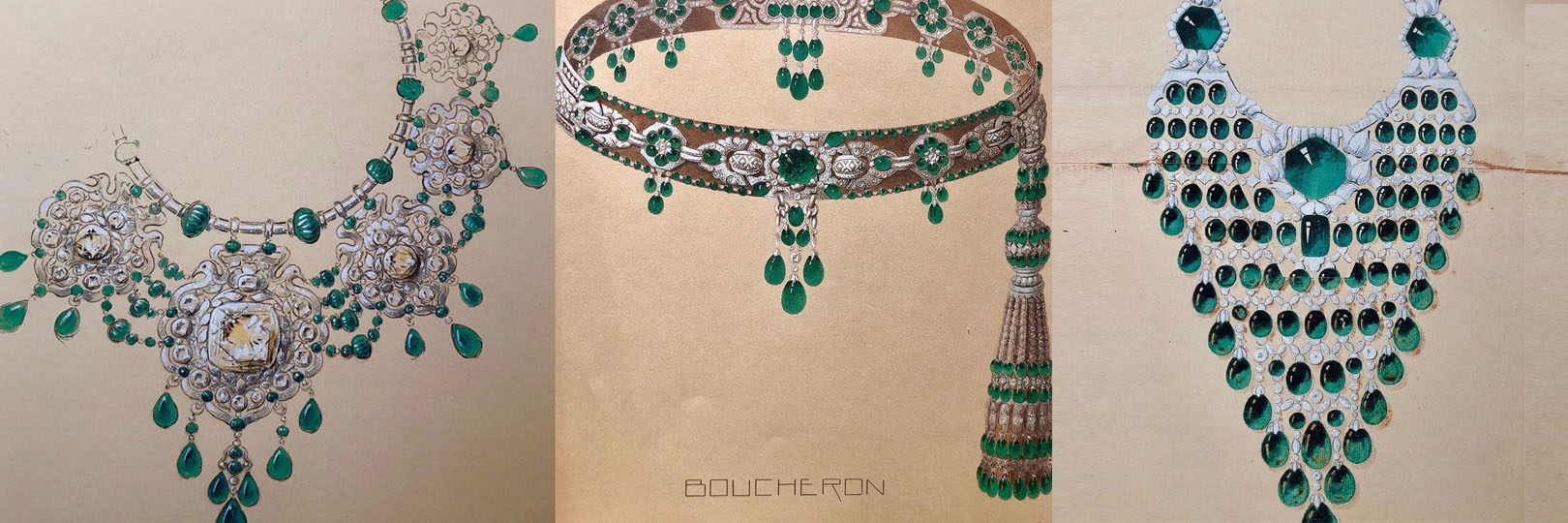
He arrived at Boucheron on Place Vendome in Paris with six suitcases full of precious stones including 7,571 diamonds and 1,432 emeralds. An admirer of Boucheron, he requested a magnificent set of jewellery composed of 149 pieces to be crafted, using the thousands of diamonds, rubies and emeralds from his personal treasure trove.
The largest necklace he commissioned of comprised 85 emeralds weighing 1,117 karats.
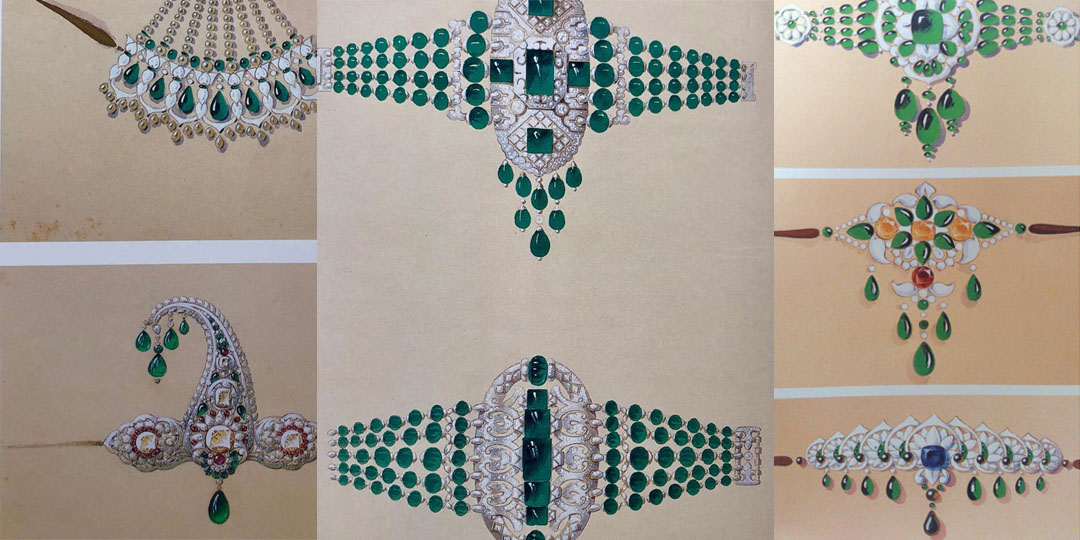
It was the first time a jewellery Maison received such a staggering order and remains to this day the most significant and remarkable special order Place Vendôme has ever seen.
Cartier jewels for Maharaja of Mandi
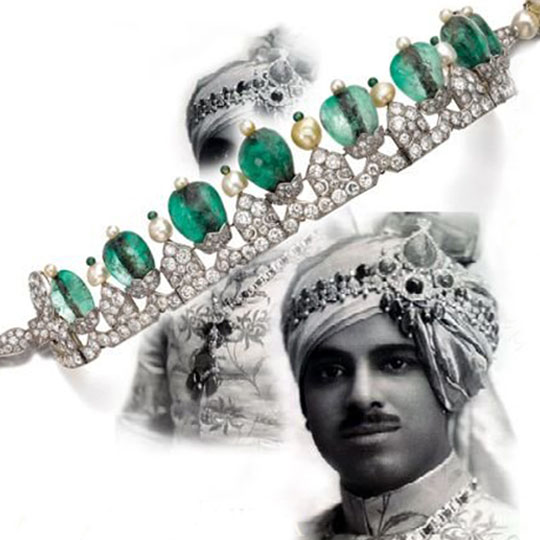
Raja Sir Joginder Sen Bahadur, the 18th Maharaja of Mandi, c.1930 was born on August 20, 1904, and served as an Ambassador of India to Brazil. Being a lover of gems with colour, he owned some of the most spectacular jewels.
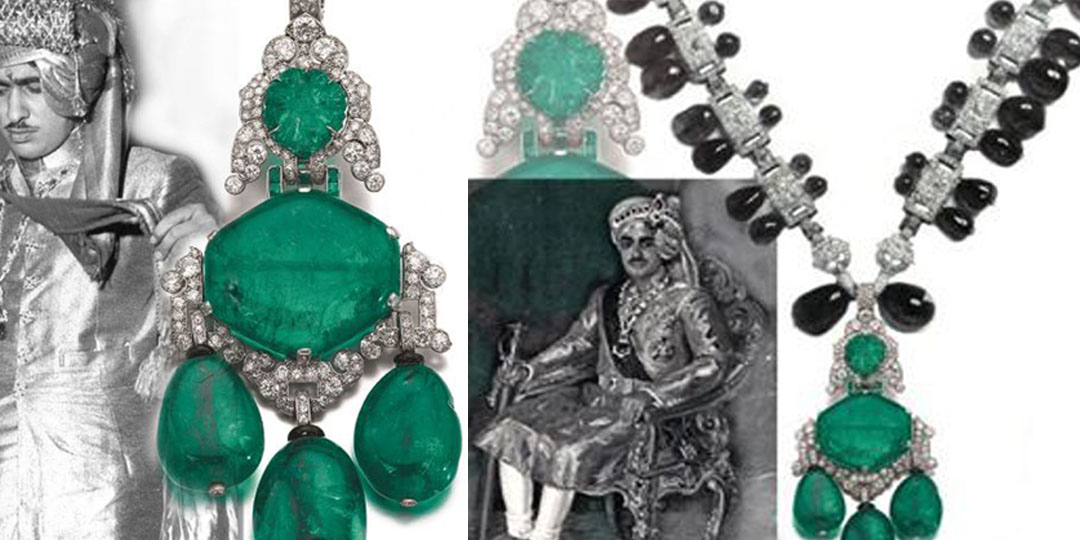
Maharaja is wearing the important Cartier Emerald and Diamond Pendant, The pendant is photographed suspended from a necklace, composed of a diamond link chain, flanked by cabochon emeralds, designed by Cartier in 1927.
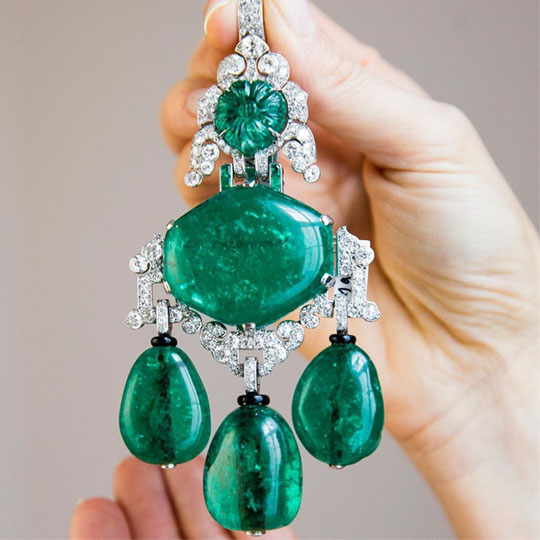
The pendant was recently sold at Sotheby’s at their Magnificent Jewels and Noble Jewels auction, in Geneva on 13th Nov 2019 for over $1m.
Ruby Diamond Necklace for Maharaja Digvijaysinhji of Nawanagar
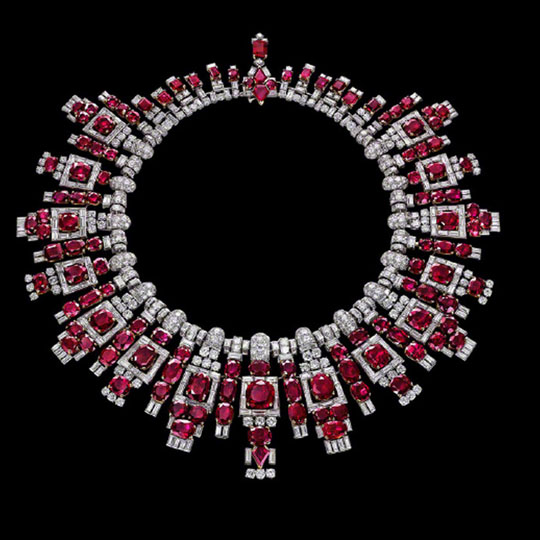
The splendid necklace was commissioned from Cartier in 1937 by Maharaja Digvijaysinhji of Nawanagar, who was a passionate collector of jewels. When the young Digvijaysinhji succeeded the throne he inherited the fabulous Nawanagar State treasure. He maintained the close relationship with Jaques Cartier enjoyed by his father for twelve years and the firm continued to recreate jewels of the highest class.
The rubies in this extraordinary necklace were supplied from the royal treasury. The 116 rubies weighing over 170 carats, with their naturally rich, deep red colour, bereft of any enhancement, originated from the famous Mogok mines of Burma. A design from the Cartier London’s sketchbook confirms the date of this commission, resulting in a tour de force of modernist design.

However, in the early 1950s, the necklace was returned to Cartier and re-offered for sale to an exclusive and select clientele, worn famously by Gloria Guinness at Truman Capote’s Black and White Ball in 1966.
Sarpech
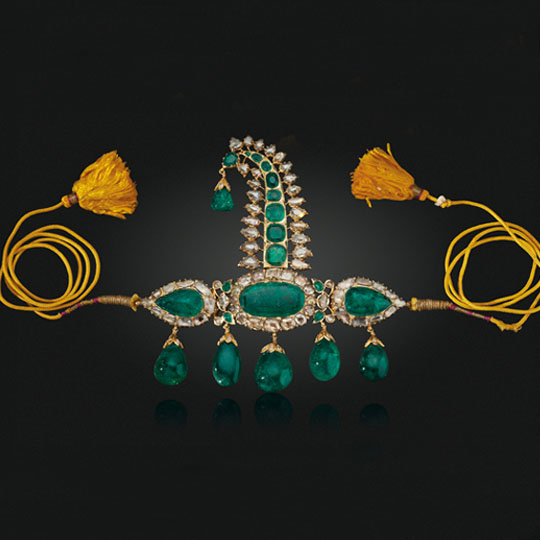
Sarpech is a turban ornament that was worn by significant Hindu and Muslim prince. Sar means head or front and pech means screw. Hence, the word Sarpech literally means that which is screwed onto the front (of the turban)

In India, various types of Sarpech are found depending on their time of production. This can be attributed to the development of the Sarpech design through centuries. Jewellery and gemstones were collected by rulers not just as desirable and expensive objects in themselves, but also as symbols of kingship. At the Mughal court, a turban ornament was bestowed as a symbol of favour on loyal courtiers, a convention that spread throughout the Indian subcontinent.
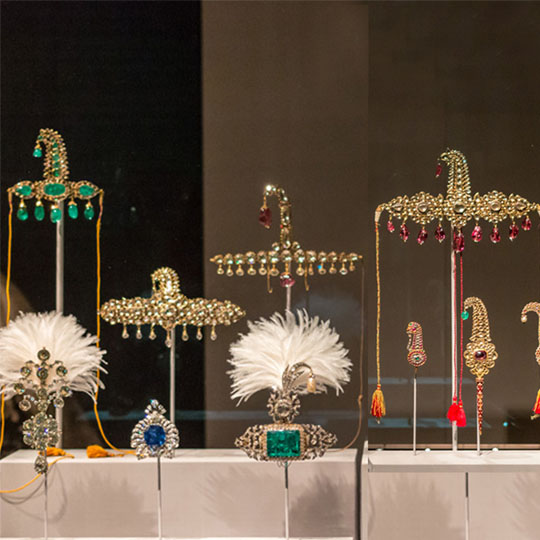
Featured above are the turban ornaments which were displayed at The Metropolitan Museum of Art, in 2015.
Bejewelled Sword
Bejewelled Swords, from the royal courts of India.
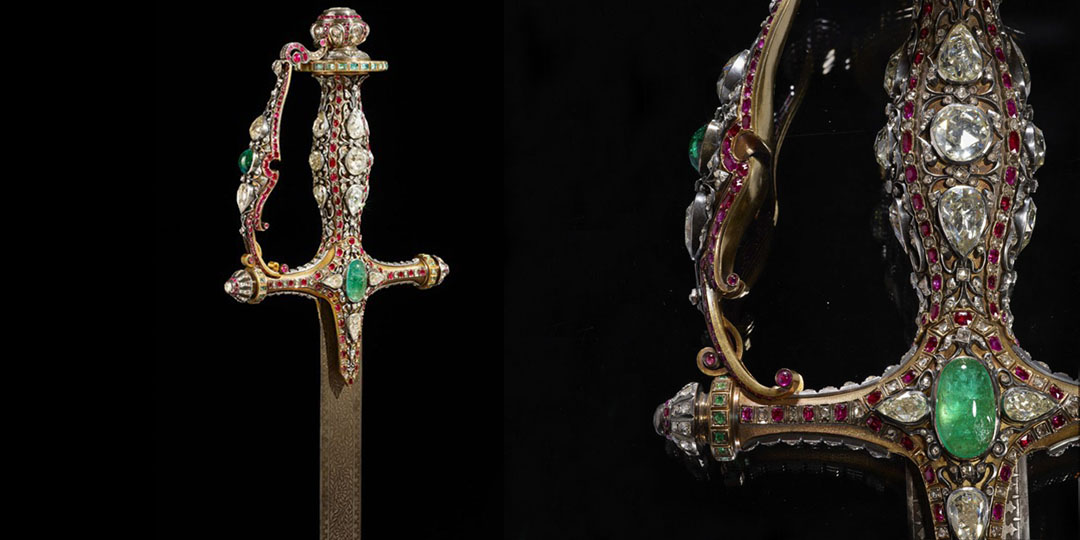
A Ceremonial sword Of the Nizam of Hyderabad, Central India 1880-1900, made in the steel blade, the gold hilt is set with diamonds, rubies and emeralds, mounted in silver, the decoration on the hilt is an amalgamation of traditional Indian and Western design influences.
The hilt follows the Mughal tradition of enamelled and gem-encrusted blade weapons, while the scrolling, diamond-set gold framework surrounding the enamelled coat of arms shows a strong European influence.
The price realized at the Christie’s Mughals and Maharajas magnificent auction in New York June 2019 was USD 1,935,000 making it the highest-selling Indian sword ever!!
It’s been such a great journey for me to curate the Maharaja’s collection for all of you.
The magnificent maharaja’s jewels are an outstandingly exciting piece for any jewellery connoisseur, with their great craftsmanship to detail, quality and style.
Indian culture was definitely one of the most important sources of inspiration for French high-end jewellery houses during the 1920s and 1930.

i like this excellent article